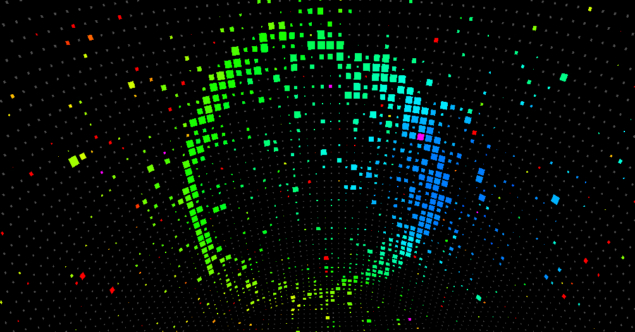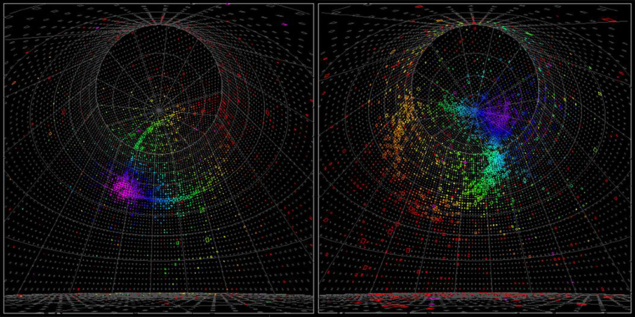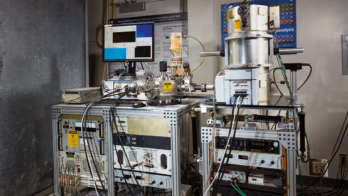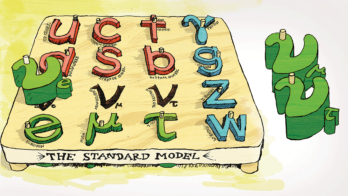
Physicists working on the T2K experiment in Japan have reported the strongest hint so far that charge-conjugation × parity (CP) symmetry is violated by the weak interactions of leptons. Based on an analysis of nine years of neutrino-oscillation data, the T2K results indicate discrepancies between the way muon-neutrinos transform into electron-neutrinos and the way muon-antineutrinos transform into electron-antineutrinos, at 3σ confidence. While further data are required to confirm the findings, the result strengthens previous observations and offers hope for a future discovery of leptonic CP violation at T2K or at next-generation long-baseline neutrino-oscillation experiments due to come online this decade.
These exciting results are thanks to the hard work of hundreds of T2K collaborators
Federico Sanchez
“These exciting results are thanks to the hard work of hundreds of T2K collaborators involved in the construction, data collection and data analysis for T2K over the past two decades,” says T2K international co-spokesperson Federico Sanchez of the University of Geneva.
Discovered in 1964, CP violation has so far only been observed in the weak interactions of quarks, mostly recently in the charm system by the LHCb collaboration. Since the size of the effect in quarks is too small to explain the observed matter-antimatter disparity in the universe, finding additional sources of CP violation is one of the outstanding mysteries in particle physics. The quantum mixing of neutrino flavours as neutrinos travel over large distances, the discovery of which was marked by the 2015 Nobel Prize in Physics, provides a way to probe another potential source of CP violation: a complex phase, δCP, in the neutrino mixing matrix. Though models indicate that no value of δCP could explain the cosmological matter-antimatter asymmetry without new physics, the observation of leptonic CP violation would make models such as leptogenesis, which feature heavy Majorana partners for the Standard Model neutrinos, more plausible.

Long baseline
The T2K (Tokai-to-Kamioka) experiment uses the Super Kamiokande detector to observe neutrinos and antineutrinos generated by a proton beam at the J-PARC accelerator facility 295 km away. As the beams travel through Earth, a fraction of muon neutrinos and antineutrinos in the beam oscillate into electron neutrinos that are recorded via nuclear-recoil interactions in Super Kamiokande’s 50,000-tonne tank of ultrapure water, where the charged lepton generated by the weak interaction creates a Cherenkov ring which can be distinguished as being created by an electron or muon (see image above). Since the beam-line and detector components are made out of matter and not antimatter, the observation of neutrinos is already enhanced. The T2K analysis therefore includes corrections based on data from magnetised near-detectors (ND280, which uses the magnet originally built for the UA1 detector at CERN’s Spp̄S collider) placed 280m from the target.

The δCP parameter is a cyclic phase: if δCP=0, neutrinos and antineutrinos will change from muon- to electron-types in the same way during oscillation; any other value would enhance the oscillations of either neutrinos or antineutrinos, violating CP symmetry. Analysing data with 1.49×1021 and 1.64×1021 protons produced in neutrino- and antineutrino-beam mode respectively, T2K observed 90 electron-neutrino candidates and 15 electron-antineutrino candidates. This may be compared with the 56 and 22 events expected for maximal antineutrino enhancement (δCP=+π/2), and the 82 and 17 events expected for maximal neutrino enhancement (δCP=−π/2). Being most compatible with the latter scenario, the T2K data disfavour almost half of the possible values of δCP at 3σ confidence. For the “normal” neutrino-mass ordering favoured by T2K and other experiments, and averaged over all other oscillation parameters, the measured 3σ confidence-level interval for δCP is [−3.41, −0.03], while for the “inverted” mass ordering (in which the first mass splitting is greater than the second) it is [−2.54, −0.32]. Averaged over all oscillation parameters, δCP=0 is now disfavoured at 3σ confidence, though it is still within the 3σ bound for some allowed values of the mixing angle θ23 (see figure, above).
“Our results show the strongest constraint yet on the parameter governing CP violation in neutrino oscillations, one of the few parameters governing fundamental particle interactions that has not yet been precisely measured,” continues Sanchez. “These results indicate that CP violation in neutrino mixing may be large, and T2K looks forward to continued operation with the prospect of establishing evidence for CP violation in neutrino oscillations.”
Next steps
To further improve the experimental sensitivity to a potential CP-violating effect, the collaboration plans to upgrade the near detector to reduce systematic uncertainties and to accumulate more data, while J-PARC will increase the beam intensity by upgrading its accelerator and beam line.
“This is the first time ever CP-violation is glimpsed in the lepton sector and it has the potential of being a very large effect,” says Albert De Roeck, group leader of the CERN neutrino group, which has participated in the T2K experiment since last year. “Future neutrino CP violation measurements will be further performed by currently running neutrino experiments, and then the torch will be passed to the planned high precision neutrino experiments DUNE and Hyper-Kamiokande that will provide measurements of the exact degree of CP violation in the neutrino system.”





